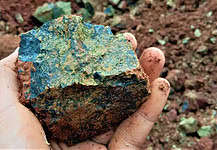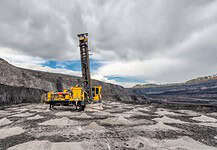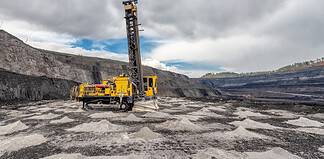Decarbonisation in Australian mining

New and advanced technologies are making low emissions mining and energy generation commercially viable and mining companies and electricity providers across the nation are moving forward and being encouraged to move forward to decarbonise their operations.
Australian miners are now profiting from the clean energy transition while accelerating national decarbonisation efforts, according to a report produced by the Clean Energy Finance Corporation (CEFC) and the Minerals Research Institute of Western Australia (MRIWA) in September last year.
According to the report, titled ‘The compelling case for decarbonisation: Mining in a low emissions economy’, Australia is among the top producers of the world’s key mineral commodities, many of which are crucial to the clean energy transition.
Its resource and energy export earnings are estimated at $405b in 2021–22 and forecast to rise to $419b in 2022–23.
As a large emitter of greenhouse gas emissions, the mining sector offers the potential to help Australia reach its net zero commitments as it accounts for 9.5% of national Scope 1 and 2 emissions, with downstream emissions higher depending on the commodity. CEFC resources executive director Rob Wilson says mining has been a cornerstone of the Australian economy, delivering the minerals needed for global growth and prosperity. “The world now needs a different mix of minerals and metals and Australian mining can ride the wave of opportunity offered by the push to net zero,” he said. “Australia has a comparatively large share of the critical minerals needed to power the low emissions economies of the future.
“By helping meet surging demand for these resources, the mining sector can help Australia and the world achieve net zero emissions by 2050, while continuing to create jobs and opportunities around the country.”
But in upbeat news, billions are already being invested in different renewable technologies both in the mining and energy sectors.
Power and gas supplier Origin Energy Limited announced last month that its flagship Eraring coal fired power station in NSW, the nations largest, will close as early as 2025 and will be replaced by a massive $600m battery.
Agreements have been executed for the supply and construction of the battery, with works to commence within weeks, according to the company.
Stage one involves construction of a 460MW battery storage system with a dispatch duration of two hours, anticipated to come online in the final quarter of the 2025 calendar year.
Origin also has the option to increase the battery to 700MW and four hours dispatch duration in the future. Battery equipment will be supplied by Finnish technology group Wärtsilä, which operates globally, while design and construction services will be provided by Enerven, a subsidiary of SA Power Networks.
Similar batteries are already in use at sites such as Dalrymple North in South Australia, which was the first transmission grid-connected battery in the national electricity market.
Fortescue Metals Group, through its Pilbara Energy Connect project has also commissioned two large battery storage systems, now finished construction, to help power its iron ore sites, with the batteries connected to a nearby solar farm.
Rio Tinto
In November, Melbourne-headquartered mining giant Rio Tinto announced it is planning to invest a further $600m in renewable energy assets in the Pilbara as part of the company’s efforts to decarbonise its Western Australian iron ore operations.
The investment will fund the construction of two 100MW solar power facilities as well as 200MWh of on-grid battery storage in the Pilbara by 2026.
This is in addition to the 34MW of solar power installed at the recently commissioned Gudai-Darri iron ore mine.
Initial funding for Rio Tinto’s first major stand-alone solar farm on the Pilbara coast has been approved and will incorporate a 100MW solar photovoltaic system and associated transmission infrastructure.
Construction, which will involve the installation of approximately 225,000 solar panels built to withstand the Pilbara’s cyclonic conditions, is expected to start next year ahead of project commissioning in 2025.
These new projects combined are expected to abate around 300,000t of CO2, equivalent to a 10% reduction in total Scope 1 and 2 emissions from Rio Tinto’s iron ore business in the Pilbara based on 2021 levels.
It will also reduce gas costs by approximately $55m per annum at current prices by displacing around 30% of the company’s current gas consumption in the Pilbara.
Rio Tinto iron ore chief cxecutive Simon Trott says the Pilbara is extremely well-positioned to take advantage of renewable power with land, access to people, and abundant wind and solar resources.
“Our Pilbara electricity grid is the largest privately- owned grid in Australia, ensuring that we have the initial infrastructure required to enable a transition to renewable energy,” he said.
“We expect to invest around $3b to install renewable energy assets as well as transmission and storage upgrades in the Pilbara as part of our commitment to halve our emissions from the Pilbara by the end of this decade.”
The company says it expects to invest $7.5b in decarbonisation projects in its quest to achieve net zero by 2050.
Fortescue Metals Group
Fortescue’s decarbonisation journey took a major step forward in January with WAE Technologies completing and delivering to Australia the largest battery of its kind, ready to be installed in a prototype zero-emission battery electric mining haul truck that Fortescue it is developing with Liebherr.
The state-of-the-art 1.4MWh prototype power system is a ground breaking innovation in heavy industry and is a bespoke design intended for integration into a 240-tonne mining haul truck.
The battery will be integral to Fortescue’s US$6.2b decarbonisation strategy to help eliminate fossil fuels from its terrestrial iron ore operations, which includes replacing its existing diesel-fuelled fleet with battery electric and green hydrogen-powered haul trucks.
A team of 50 engineers and technicians were responsible for developing the pioneering power system, which weighs 15t, measures 3.6m long, 1.6m wide and 2.4m high, and is made up of eight sub-packs, each with 36 modules, all individually cooled and each with its own battery management system.
The company said It is a massive achievement that was completed in record time and marks several firsts for an electric mining haul truck battery, with energy storage of 1.4MWH, the ability to fast-charge in 30 minutes and capacity to regenerate power as it drives downhill.
Fortescue Future Industries chief executive Mark Hutchinson says WAE and Fortescue are working together to seek to decarbonise faster and more effectively than any other major industrial company in the world. “The battery system, designed for our zero- emission battery electric mining haul trucks is an important part of our strategy to reach real zero terrestrial emissions (Scope 1 and 2) across our iron operations by 2030,” he said. “WAE’s battery expertise compliments FFI’s green hydrogen projects and cements Fortescue as a leader in the technologies needed for the green energy transition.”
The battery has now arrived at Fortescue’s workshop in Perth, WA, and will be assembled and installed, before its transported to the Pilbara for world-leading testing on site in 2023.
WAE Technologies chief executive Craig Wilson says this marks the latest milestone in the rapid development of state-of-the-art zero-emission technology for Fortescue’s mining trucks. “This high-performance power system not only boasts the highest energy storage of its kind, but will also be the first to offer 30-minute fast charging,” he said. “This system is the first of many technologies that can help enable Fortescue to realise its industry leading 2030 net-zero target. “Powered solely by renewable energy, it will help prevent enormous amounts of fossil fuel from being used in the mining industry, with the goal to not compromise the vehicle’s load capacity. “This is an inspiring example of what can be achieved combining Fortescue’s pioneering green energy vision for its global vehicles and WAE’s extensive expertise in advanced batteries.”







































